Pashmina, known here as Lena Kashmir, comes from a special type of goat named Changra, which lives in the highlands of Ladakh in northern India and neighboring Tibet at an altitude of over 5000 meters. Nature has endowed the goats with a thick undercoat to protect them from the extreme cold of winter. It almost never rains in this arid region. They are raised by herds of attentive shepherds who manually comb their wool in the spring. The coarse, heavy outer layer is then peeled from the soft, thin cashmere undercoat.
They graze on the sparse vegetation of the region, where chemicals have never been used, and their water comes from mineral-rich streams that drain from the high mountains. Changra goats are not native to Kashmir itself, as they cannot tolerate its humid climate, but for centuries their fine wool has been carried over the high passes from their natural habitat on the arid Changtung Plateau. From here it was always carried through high passes to the fertile valley of Kashmir, since only here there are talents to make and weave wonderfully soft and luxurious shawls from it.
It should be emphasized that the Changra goat is not killed in order to obtain its wool. It is not possible to perform any mechanical shear, as this can lead to breaking of the very thin fiber and the impossibility of rotation.
After combing, the fiber reaches the Kashmir Valley in disordered bundles, which are then delivered to highly trained women with centuries of experience. First, it is sorted and the coarse outer hair on the fleece is removed. It is then turned from soft carded cashmere into small fluffy balls for spinning preparation.
Only Kashmiri women have the traditional knack for spinning incredibly fine yarns, which must be hand-made to avoid breakage. Hence, women play a very important role in the processing of yarns for weaving.
This is a highly respected skill that only exists in Kashmir. It is an ancient skill that has been perfected over the centuries. Rotation is carried out manually on a traditional charkha wheel. Turning fiber into very fine yarn is highly skilled work.
Once spun, it is wound onto another wheel known as the Pritz. The spinner holds the yarn in one hand and turns the crosshair to pass the yarn over it so that it twists slightly. From there it is carried in skeins.
It is now ready to be weaved in natural colors. Before weaving, the warps are covered with rice water so that the yarn is strong enough for weaving, then it is washed. The yarn can also be dyed by hand with skeins in a copper jar placed over the wood. The dyer then checks it to make sure the color is evenly distributed. Whenever possible, we use natural dyes, which we plan to expand to cover the entire range.
The fine yarns are now ready for the weaving traditionally done by men. The warp then goes through shifts and spreads over the loom.
The frame is made of wood. The ducks pass along the base with two or more shuttles, this is the local mulberry wood. The weaver sets up the loom according to the project requirements. The number of weft hooks used depends on the weft model.
The two colors of the Changra goat can be left solid, in natural ivory and brownish gray. Or it can be solid color after weaving in any desired color, or it can be embroidered in many different designs. For embroidery, designs are first created on hand-carved blocks of local walnut, a craft that is becoming increasingly rare.
However, all block printers have a huge archive of blocks that are passed down from generation to generation. If a new model is required, it must first be drawn and then brought to the block cutter to obtain a new block. The blocks are first dipped in rice paste and natural rubber and then printed as needed according to the desired pattern on the fabric. The elastic comes out during washing.
Then you move on to embroidery, there are different types of embroidery, each with its own technique. Numerous embroiderers in the valley use different techniques such as Kanikar and Soznikar. The finest local silk threads are made from mulberry trees native to the Kashmir Valley. The ones we work with are mostly in Srinagar or in many small villages nearby.
In the hands of the best craftsmen, the effect is like a mosaic of tiny jewels flowing behind his palm.
Another type of embroidery is called ari after the name of the crochet hook. Craftsmen and women work while sitting on the ground, throwing a shawl over their knees. They hold the thread underneath the fabric. They then thread the crochet through the fabric and pull the thread upward, forming a continuous chain, working from the pattern printed or drawn on the shawl.
This is also known as chain stitch. This type of embroidery is done quickly, but is never done on fine cashmere, but on various other qualities of local wool and coarse cotton that are often used for home furnishings. The famous Kashmiri shawls, which were at the height of fashion in the late 18-19th centuries, were woven using a special technique. The pattern was woven as part of a shawl using the finest twill tapestry technique known as kani dal kan, which is a kind of pointed stick with a thread wound at each end. Kani weaving is a very old technique preserved in Kashmir.
We are helping to keep him alive and are very pleased that several young masters have joined us in the revival. This is a laborious job, it can take 2 to 4 years to make a shawl. This requires absolute concentration and patience, because mistakes cannot be corrected.
The graphic model is first prepared by the artist. All artists are imbued with the traditions of Kashmiri models, although more modern versions are now emerging. This design is then translated into a special language of the weavers called talim, which describes the pattern and colors that each weaver must use. In the past, these instructions were read by a master weaver.
Finally, regardless of the molding process, each shawl is eventually washed in the rivers flowing from the high mountains. The natural minerals found in this cold water also add shine to these wonderful natural products. Here they are washed by the Jelum River, which flows through the old city of Srinagar. They are then laid out to dry before steam pressing on a mechanical roll. This is the last stage in the production of Lena shawls. The same effect cannot be achieved with a hand iron.
All this allows the best possible preservation of the characteristics of the cashmere shawl. They are then folded neatly. At this time, the shawls are ready for sale. It should be noted that in all processes, each step must be followed individually and personally with great care.

